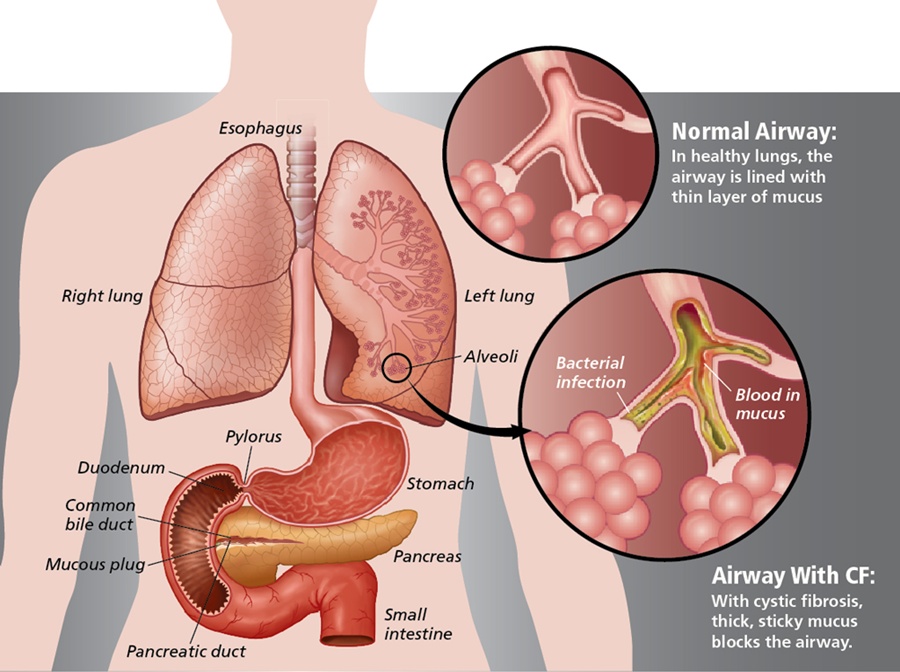Source: Thailand Medical News Nov 01, 2019 6 years, 1 month, 1 week, 5 days, 6 hours, 43 minutes ago
Mayo Clinic researchers and collaborators have identified a way to slow and reverse the process of uncontrolled internal scarring, called
fibrosis in cell and mouse models and are expected to start human trials soon. This is major breakthrough in future treating of fibrosis that affects millions worldwide.
 Pulmonary Fibrosis
Fibrosis
Pulmonary Fibrosis
Fibrosis has few effective therapies, no cure and can be fatal when it occurs in organs such as the liver (cirrhosis) or lungs (pulmonary
fibrosis).
Previously, researchers identified two proteins that regulate gene action and provide "instructions" for
fibrosis, called yes-associated protein (YAP) and transcriptional co-activator with PDZ-binding motif (TAZ). However, YAP and TAZ are involved in too many other beneficial actions and can't be universally blocked. So the scientists, led by Daniel Tschumperlin, Ph.D., a Mayo Clinic researcher, focused on cells that form the scar tissue, called fibroblasts. After an injury, these cells migrate to the damaged area and produce collagen to re-form the scaffolding around cells and repair tissue. In
fibrosis, fibroblasts release collagen in amounts that interfere with an organ's function.
Dr Daniel Tschumperlin told
Thailand Medical News, "We started this work almost five years ago with seed funding from Mayo's Center for Biomedical Discovery because
fibrosis is an important and poorly understood disease process. We had identified the transcriptional regulatory proteins YAP and TAZ as important to the progression of
fibrosis, but there were no viable approaches to target this pathway for therapy."
The study reports on a new target: a dopamine receptor. The researchers found that the receptor is unique to lung and liver fibroblasts. Stimulating it blocks YAP and TAZ, reducing and reversing the growth and scar-forming abilities of fibroblasts. Stimulating the dopamine receptor in fibroblasts appeared to switch them from a matrix-depositing state that supports
fibrosis to a matrix-degrading state that supports resolution or reversal of
fibrosis. In lung and liver
fibrosis models, the approach reversed the fibrotic process in these organs.
Dr. Tschumperlin added, "Dopamine is mostly studied in disorders of the central nervous system, and we were surprised to find dopamine receptors expressed in fibroblasts. We also found that the lung may be able to produce dopamine locally, and this fu
nction appears to be compromised in individuals with pulmonary
fibrosis. Thus, the pathway we are targeting might be part of a normal response that would limit fibrosis,but is somehow missing in patients."
The findings, the researchers say, opens up a new treatment concept for fibrotic disease conditions. They hope to build on the decades of work that already has gone into developing dopamine receptor-targeting drugs in the brain to develop new dopamine-related therapies for
fibrosis.
"In addition to following up on regulation of dopamine signaling in the lung, we are actively developing novel molecules to target the dopamine receptor, as we think there is substantial promise in trying to translate this approach to human diseases," says Dr. Tschumperlin.
Other authors of the paper include collaborators from the University of Pittsburgh, Massachusetts General Hospital/Harvard Medical School, and Boston University School of Medicine. In addition to Dr. Tschumperlin, other Mayo authors are Andrew Haak, Ph.D.; Enis Kostallari, Ph.D.; Delphine Sicard, Ph.D.; Giovanni Ligresti, Ph.D.; Kyoung Choi, Ph.D.; Nunzia Caporarello, Ph.D.; Dakota Jones, a student in Mayo Clinic Graduate School of Biomedical Sciences; Qi Tan, Ph.D.; Jeffrey Meridew; Ana Diaz Espinosa; Aja Aravamudhan, Ph.D.; Jessica Maiers, Ph.D.; Rodney Britt Jr., Ph.D.; Anja Roden, M.D.; Christina Pabelick, M.D.; Y.S. Prakash, M.D., Ph.D.; and Vijay Shah, M.D.
Reference : Selective YAP/TAZ inhibition in fibroblasts via dopamine receptor D1 agonism reverses fibrosis
ANDREW J. HAAK, ENIS KOSTALLARI, DELPHINE SICARD, GIOVANNI LIGRESTI, KYOUNG MOO CHOI, NUNZIA CAPORARELLO, DAKOTA L. JONES, QI TAN, JEFFREY MERIDEW, ANA M. DIAZ ESPINOSA, AJA ARAVAMUDHAN, JESSICA L. MAIERS, RODNEY D. BRITT, JR., ANJA PRAKASH, SEYED MEHDI NOURAIE, XIAOYUN LI, YINGZE ZHANG, DANIEL J. KASS, DAVID LAGARES, ANDREW M. TAGER, XARALABOS VARELAS, VIJAY H. SHAH, DANIEL J. TSCHUMPERLIN, SCIENCE TRANSLATIONAL MEDICINE 30 OCT 2019
Vol. 11, Issue 516, eaau6296 DOI: 10.1126/scitranslmed.aau6296
